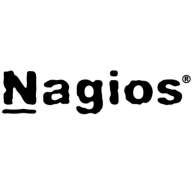

SolarWinds NPM and Nagios Core compete in the network monitoring software category. SolarWinds NPM seems to have the upper hand due to its integration capabilities and user-friendly features, although at a higher cost.
Features: SolarWinds NPM offers scalability, customization, and extensive alerting capabilities. It is suited for complex network environments and integrates with various third-party tools. Nagios Core, while open-source, provides robust monitoring and flexibility for custom scripts and plugins, but lacks extensive integration and a user-friendly experience compared to SolarWinds NPM.
Room for Improvement: SolarWinds NPM struggles with network discovery accuracy and alert configuration, with some features requiring additional modules that can impact platform stability when multiple modules are added. Nagios Core's customization is challenged by a complex configuration and outdated user interface, lacking built-in support for newer protocols and cloud services.
Ease of Deployment and Customer Service: SolarWinds NPM offers diverse deployment options across on-premises, hybrid, and cloud environments with generally responsive client support, though occasional issues occur with aggressive sales tactics and slow technical assistance. Nagios Core is mostly deployed on-premises, requiring significant technical expertise for customization without official support, potentially leading to challenges due to its reliance on community support and lack of built-in management tools.
Pricing and ROI: SolarWinds' pricing is significant, especially when additional modules are needed, but it provides substantial ROI through operational efficiencies. Nagios Core is a cost-effective, open-source option for organizations with in-house expertise to manage configuration, though hidden costs may arise from the need for skilled personnel to handle installations and customizations.
The return on investment is significant as the solution effectively reduces costs while being worth its expense.
If there is no timely response, getting a resolution is more difficult.
We had contact with SolarWinds regarding the implementation, and they were helpful.
They have good technical support.
The solution is scalable.
SolarWinds NPM is scalable and effective in handling large network infrastructures.
I tried many other solutions at work, however, in terms of Nagios, I haven't seen any disruption or downtime.
The NPM product is stable, particularly when used for simple network monitoring.
Customers have given feedback about the delayed response times from the technical team.
SolarWinds needs to upscale on observability and add full-fledged observability features, including security features.
PRTG's package offers all features in one bundle, which is cost-effective.
The solution is considered expensive.
It has a very handy dashboard, providing live alerts and visibility for everything.
SolarWinds NPM has specific modules for monitoring different network capabilities, which provides rich features for carrying out specific tasks.
It provides a detailed overview of the network, which is valuable.
The most valuable feature for us is the database performance analyzer, which we use a lot.


This is IT infrastructure monitoring's industry-standard, open-source core. Free without professional support services.
SolarWinds NPM is a network monitoring solution that enables you to detect, diagnose, and resolve network performance issues and outages quickly and efficiently. The solution is a powerful tool that can help you increase service levels, reduce downtime with multi vendor network monitoring, simplify the management of complex network devices, improve operational efficiency, and much more.
SolarWinds NPM Features
SolarWinds NPM has many valuable key features. Some of the most useful ones include:
SolarWinds NPM Benefits
There are several benefits to implementing SolarWinds NPM. Some of the biggest advantages the solution offers include:
Reviews from Real Users
Below are some reviews and helpful feedback written by PeerSpot users currently using the SolarWinds NPM solution.
PeerSpot user Andrew N., Senior Network Engineer at Element Critical, says, “The "Performance Analyzer" feature is the solution's most valuable aspect. It's able to do the bounded graphs of all the interface stats, from errors to broadcasts and to current traffic. With a click of a button you're able to, in one interface, look at historical data for those items.” He also adds, “From the troubleshooting point of view, just having that peace of mind is great. And, The solution is extremely stable. We haven't had any issues in that regard. We haven't had issues with bugs, glitches, or crashes."
Daniel S., Systems and Data Warehouse Supervisor at MMSD, mentions, “The alerting and usage tracking is a valuable feature because it alerts us when we're getting near capacity on disk space, network utilization or processor utilization. It helps us manage our capacity and enables us to be proactive.”
A Senior Vice President and CIO at a financial services firm explains, “As we look to add more servers to our virtual environment and to understand the impact, the solution allows us to dig into the historical charts related to capacity planning. It also gives us visibility of spikes and allows us to track down the reasons for their occurrences. So too, it makes room for potential processes that have gotten hung or runaway and to know when it's time to reboot a server or service.”
Dinesh N., Digital Innovation at Bobcat Company, states, “The best part of the solution is the sharing display. It gives a general public ID wherein everyone can link to a public display. That's a good feature.”
Fazal A., Implementation & Support Specialist at 360Factors, comments, “We have configured multiple alerts for our network devices, including routers and switches, so that we are notified if any interface goes down. In the event an interface goes down, we have multiple reports that include availability monitoring, network uptime monitoring, and network downtime monitoring. These reports are on multiple schedules such as the end of the day, end of the last business day of the week, monthly, and quarterly. This gives us the ability to provide reports to our management and let them know the performance of our network.”
We monitor all Network Monitoring Software reviews to prevent fraudulent reviews and keep review quality high. We do not post reviews by company employees or direct competitors. We validate each review for authenticity via cross-reference with LinkedIn, and personal follow-up with the reviewer when necessary.